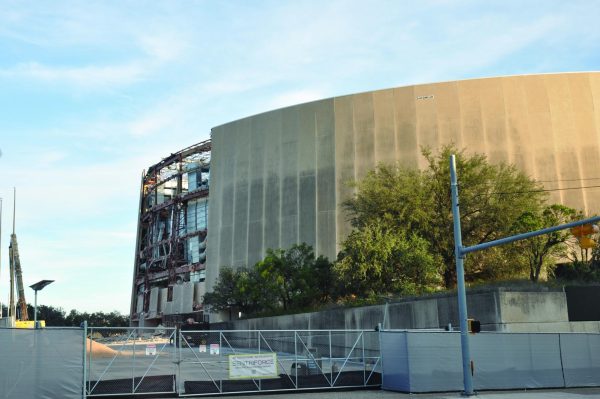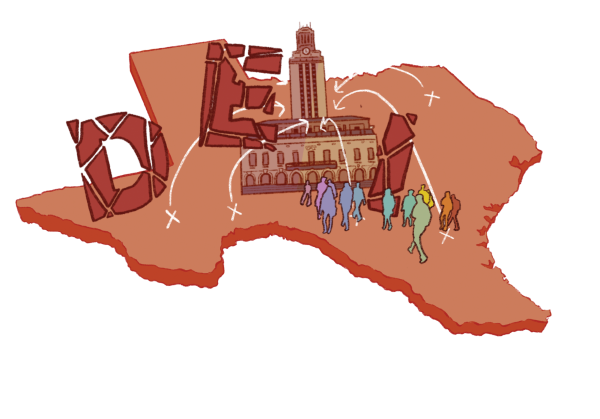Post-Freeze in Texas
April 14, 2021
During the winter storm that occurred in mid-February, Texans were faced with different challenges depending on their location, their financial situation and their experience with the unfamiliar weather. Austinites were left without power, water and energy and, in some cases, are still recovering from the effects of the storm.
The majority of Texas’s electrical grid, which is separate from the U.S. national grid, is operated by the Electric Reliability Council of Texas (ERCOT). Due to a statewide fall in power generation on Feb. 15, ERCOT began implementing blackouts. Because of the shortage of power, electricity bills spiked, and providers faced significant losses or bankruptcy. Lawsuits have also been filed against ERCOT for mismanagement, as well as the failure to weatherize generators after the outage that occurred in Texas.
Kelly Blackmer is a former ERCOT employee and control room operator. He said that multiple power companies around the state own parts of the grid, but ERCOT manages it.
“Within ERCOT, each power company has their own transmission services, like Austin Energy,” Blackmer said. “But the whole of the grid is overseen by the ERCOT operators, who check that the power is flowing the way it needs to, that the lines aren’t overloaded, and the market is functioning correctly, and above all, that the frequency is maintained throughout the interconnection.”
Blackmer said there were multiple causes of the issues in the grid that led to blackouts. According to him, the most important responsibility of power regulators is to maintain the balance between the power generated and the power used.
“In the U.S., we have a standard operating frequency of 60 hertz, which basically means that our power generators are cycling around 60 times every second,” Blackmer said. “ERCOT’s job is to keep the generation consistent with the load that’s connected to it. The load is the amount of power used by buildings around Texas. If those things aren’t in balance, the frequency drops. When you have a cold weather event, not only is there loss of generation, but also a rise in load, because everybody’s turning on their heaters to stay warm. So the frequency dropped low enough for the generators to start tripping.”
Blackmer said that ERCOT implemented blackouts to maintain the balance between energy and load. According to Blackmer, effects of cold weather on transmission equipment also worsened the issue.
“When reliability coordinators at ERCOT saw generation decreasing, they needed to get rid of some of the load to maintain that balance,” Blackmer said. “That’s why they had to implement temporary blackouts so they could repair the system and avoid it going offline completely. Another thing that makes restoring the system more difficult is the fact that transmitters all over the city like power lines and transformers were frozen by the cold.”
People all over Texas suffered from the storm in different ways, according to Peter Tung, a citizen whose parents own a motel in southeast Austin. Tung said that the storm not only caused physical damage, but led to issues with their employees and customers.
“Obviously, the plumbing issues were the main issue that happened because of the storm, but another big problem was the worker commute,” Tung said. “We had people that couldn’t come to work because Austin wasn’t prepared and none of the roads were operational. So in addition to physical repairs, it was extra bad from a business point of view because the guests were stuck with no service or housekeeping or anything like that, which meant that we had to compensate them.”
According to Tung, managing a business during a weather disaster required him to face a set of challenges different from people who experienced damage to their homes rather than their places of work. Reasons for these challenges include the effects of the damage and the scale of the repair.
“In terms of physical damage, the biggest issue was that one of the pipes burst, so we had to shut water down for the whole building,” Tung said. “We had to do some manual patching up and fixing the water system, which will last until we get a licensed plumber on the premises to assess the damage. When you’re running a business that gets damaged in some way, repairs of this scale present extra challenges than just repairing your house — it doesn’t only affect you or your family, but your employees and your customers as well. That’s why you have to get through all these regulations, and all the while, you’re losing business.”
Because of excessive demand, repairs are even more expensive than usual in the places affected by the storm, according to Tung. He added that the local government should work on a way to control the prices offered by the maintenance industry.
“One of our biggest challenges right now is trying to find a plumber that’s not overcharging,” Tung said. “I don’t really blame them for overcharging because they’re working overtime for everybody right now. At least for Austin, I feel like there’s not a good general plan on how to financially deal with weather disasters like this in terms of regulating prices for repairs.”
English II teacher Lauren Williams resides in an apartment complex that was severely affected by the winter storm. Although she wasn’t faced with paying for the restoration of her home, she said the effects of the storm have disrupted other aspects of her life.
“For starters, my apartment lost power for several days, so I was forced to throw out the contents of my refrigerator and freezer,” Williams said. “It was definitely sad to see all that food and money go to waste, but it’s also nice living in an apartment in some ways because things like plumbing repairs are the responsibility of the complex owners. However, the biggest issue that’s come up is that, because of really horrible communication between my apartment and their residents, I ended up breaking my lease, and I’m currently in the process of getting ready to move to a new place. Being clued in on what’s going on, when I can get my power and water back, when everything will be normal again, is something that’s very important to me.”
According to Williams, it is necessary that legal action be taken against ERCOT for neglecting to prepare for the winter storm. She also said that priorities should be placed on helping people recover and the mitigation of future weather events in Texas.
“Legislation wise, I think the ERCOT organization needs to be held responsible for the effects of this storm,” Williams said. “They were told, on two separate occasions, what they needed to do to avoid this type of catastrophe, and those suggestions were ignored. So in this case, these measures shouldn’t be suggested anymore — there needs to be some sort of consequence for not doing them. A lot of people took a hit on this one, so we need to help them get back on their feet.”









